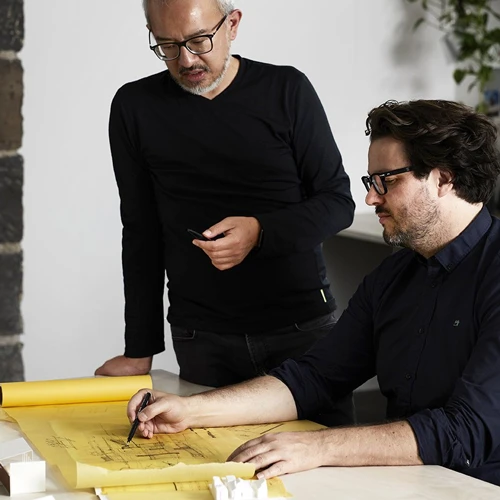Welcome to your ultimate guide to creating a kitchen that’s both beautiful and brilliantly functional! Whether you’re dreaming of a full renovation or just looking for some smart upgrades, understanding the key elements of a well-designed kitchen can transform your space into the heart of your home. In this article, we’re sharing 7 essential features that make a kitchen not only stylish but also incredibly practical — each paired with stunning photos to inspire your own design journey. Get ready to discover how thoughtful details can elevate your kitchen from just a cooking area to a true hub of comfort and convenience![3]
Optimal Layouts for Maximum Efficiency
Creating a kitchen that flows seamlessly starts with intelligently arranging the core elements: cooking, cleaning, and storage areas. By placing these zones within easy reach of each other, you minimize unnecessary steps and keep everything at your fingertips. Consider popular layouts like the work triangle, which connects the stove, sink, and refrigerator in a way that streamlines movement and conserves energy during meal prep.
In addition to spatial arrangement, thoughtful use of corners and underutilized spaces can dramatically increase storage and work surface options. Incorporate pull-out drawers, lazy Susans, or even foldable counters to maximize usability without crowding the room. Below is a quick overview of commonly recommended layouts and their efficiency perks:
| Layout | Efficiency Benefit | Ideal For |
|---|---|---|
| Galley | Compact workspace; minimal steps | Small kitchens |
| L-Shaped | Open floorplan; flexible zones | Medium to large kitchens |
| U-Shaped | Maximum surface area; multiple cooks | Large kitchens |
| Island | Extra prep and social area | Open-plan kitchens |
Smart Storage Solutions to Declutter Your Space
Integrating smart storage solutions into your kitchen design can transform clutter into calm, making every inch count. Imagine having storage units equipped with real-time monitoring and motion detection, so you’re always aware of what’s inside without even opening a cabinet. These smart units often come with alarms and instant text notifications, giving you added peace of mind, especially for storing valuable or seasonal kitchen gadgets. Incorporating such tech-savvy options not only keeps your kitchen tidy but also adds a sleek, modern edge that enhances your cooking experience.
To make the most of these innovations, consider adding features like:
- Bluetooth locks for secure access without fumbling for keys
- Humidity sensors to protect perishables and delicate ingredients
- Motion-activated lighting inside cabinets to easily spot items in low light
| Storage Solution | Key Benefit | Perfect For |
|---|---|---|
| Real-time Monitoring Units | Instant alerts of access or movement | Valuables, gadgets |
| Bluetooth-Enabled Locks | Keyless, secure entry | Frequently used pantry items |
| Humidity Sensors | Optimal storage environment | Herbs, spices, fresh produce |
Choosing Durable and Stylish Materials
When creating a kitchen that stands the test of time, both in function and fashion, selecting the right materials is key. Opt for surfaces that blend toughness with visual appeal, like quartz countertops or hardwood flooring, which offer resilience against daily wear while adding warmth and character. Incorporating materials such as stainless steel appliances and ceramic backsplashes ensures easy maintenance and a timeless look. Remember, your kitchen materials should be as practical as they are pretty.
Consider the following when choosing your kitchen materials:
- Durability under heat, moisture, and heavy use
- Ease of cleaning and upkeep
- Compatibility with your kitchen’s color scheme and style
- Environmental impact and sustainability
| Material | Durability | Style Vibe |
|---|---|---|
| Quartz | High | Modern & Sleek |
| Hardwood | Medium | Warm & Classic |
| Stainless Steel | High | Industrial & Clean |
| Ceramic Tiles | High | Versatile & Colorful |
Incorporating Lighting That Transforms Your Kitchen
Lighting is often the unsung hero of kitchen design, dramatically affecting both functionality and ambiance. Incorporating a mix of layering techniques—ambient, task, and accent lighting—ensures every corner of your kitchen is both inviting and practical. Imagine bright, focused lights over your countertops for effortless meal prep, paired with softer, warm tones below cabinets or inside glass-front cabinetry to create a cozy atmosphere when entertaining friends or family.
Smart lighting options have also revolutionized modern kitchens. With dimmable LEDs, motion sensors, and color-changing bulbs, you can easily tailor the mood and energy of your space with just a tap on your phone or a voice command. Here’s a quick guide to help you plan your kitchen lighting:
- Ambient: Recessed ceiling lights or pendant fixtures for overall illumination.
- Task: Under-cabinet LEDs and pendant lights above islands for focused lighting.
- Accent: Spotlights inside shelves or around artwork to add personality.
| Lighting Type | Recommended Use | Benefits |
|---|---|---|
| Ambient | General room lighting | Brightens entire space uniformly |
| Task | Work areas like counters | Enhances visibility for cooking |
| Accent | Decorative elements | Creates focal points & depth |
Q&A
Q&A: 7 Essential Features of a Well-Designed Kitchen (7 Photos)
Q1: Why is kitchen design so important?
A1: The kitchen is often the heart of the home — where meals are made, memories are shared, and daily life happens. A well-designed kitchen boosts functionality, makes cooking enjoyable, and creates a welcoming space for family and friends.
Q2: What are the must-have features for an efficient kitchen?
A2: According to experts, the seven essential features include smart storage solutions, ergonomic layout, high-quality lighting, durable countertops, efficient appliances, easy-to-clean surfaces, and ample workspace.
Q3: How does smart storage improve a kitchen?
A3: Clever storage maximizes space and reduces clutter. Think pull-out shelves, deep drawers, and vertical organizers that make everything easy to find and keep countertops clear — key for a tidy and stress-free cooking area.
Q4: What’s an ergonomic layout? Why does it matter?
A4: An ergonomic layout minimizes unnecessary movement — like the classic “kitchen work triangle” between sink, stove, and fridge. This setup keeps everything within easy reach, saving you time and effort while cooking.
Q5: How important is lighting in a kitchen?
A5: Lighting is crucial! Layered lighting, including ambient, task, and accent lights, ensures your workspace is bright and inviting. Good lighting makes food prep safer and enhances the kitchen’s overall mood.
Q6: What materials work best for countertops?
A6: Durable, easy-to-maintain materials like quartz, granite, or butcher block are popular choices. They stand up to heat, scratches, and spills — essential for a busy kitchen environment.
Q7: Why include ample workspace in kitchen design?
A7: Having enough clear counter space makes meal prep smoother and more enjoyable. It allows for multiple activities at once, whether chopping veggies, rolling dough, or plating dishes.
Q8: How can photos inspire my own kitchen design?
A8: Seeing real-life examples helps you visualize how these features come together in a stylish, practical way. The 7 photos featured showcase creative ideas and layouts that you can adapt to fit your home and lifestyle.
Got more questions or want design tips? Drop a comment below — let’s chat kitchens!
The Way Forward
And there you have it—the seven essential features that make a kitchen not just functional, but a true joy to cook and gather in. Whether you’re dreaming of a full remodel or just looking to tweak a few things, these design tips can transform your space into the heart of your home. Don’t forget to check out the photos for some tasty inspiration! Here’s to creating a kitchen where every meal feels special and every moment is made a little brighter. Happy cooking!



